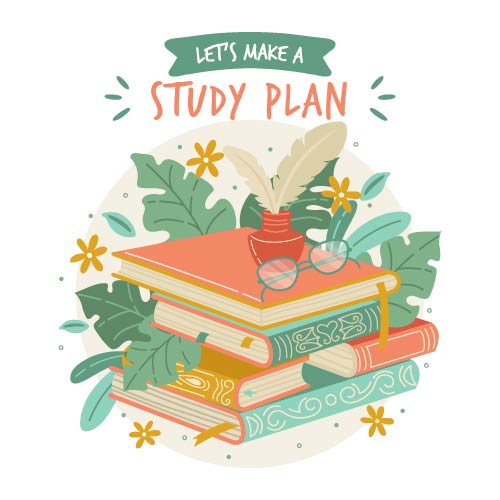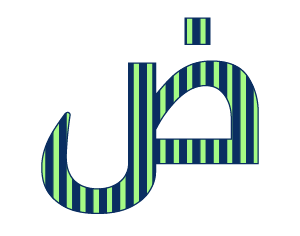Are you feeling overwhelmed by the hundreds of tutorials offering to teach you Arabic? Do you find promises of ‘the best Arabic program’ everywhere?
This guide aims to cut through all the noise, and provide you clarity for learning Arabic. I have also listed the most important resources and books you need to master Arabic.
Step 1: Determine your current level
The first thing we do at Fluent Arabic is to determine the level of the student and assign him or her to one of the 6 CEFR levels. You should do the same and identify your correct level, because this will help you choose the right material and curriculum.
Here are the CEFR levels we recommend for Arabic:
| Basic User | A1 | Can understand and use familiar everyday expressions and very basic phrases aimed at the satisfaction of needs of a concrete type. Can introduce him/herself and others and can ask and answer questions about personal details such as where he/she lives, people he/she knows and things he/she has. Can interact in a simple way provided the other person talks slowly and clearly and is prepared to help. |
| A2 | Can understand sentences and frequently used expressions related to areas of most immediate relevance (e.g. very basic personal and family information, shopping, local geography, employment). Can communicate in simple and routine tasks requiring a simple and direct exchange of information on familiar and routine matters. Can describe in simple terms aspects of his/her background, immediate environment and matters in areas of immediate need. | |
| Independent User | B1 | Can understand the main points of clear standard input on familiar matters regularly encountered in work, school, leisure, etc. Can deal with most situations likely to arise whilst travelling in an area where the language is spoken. Can produce simple connected text on topics which are familiar or of personal interest. Can describe experiences and events, dreams, hopes & ambitions and briefly give reasons and explanations for opinions and plans. |
| B2 | Can understand the main ideas of complex text on both concrete and abstract topics, including technical discussions in his/her field of specialisation. Can interact with a degree of fluency and spontaneity that makes regular interaction with native speakers quite possible without strain for either party. Can produce clear, detailed text on a wide range of subjects and explain a viewpoint on a topical issue giving the advantages and disadvantages of various options. | |
| Proficient User | C1 | Can understand a wide range of demanding, longer texts, and recognise implicit meaning. Can express him/herself fluently and spontaneously without much obvious searching for expressions. Can use language flexibly and effectively for social, academic and professional purposes. Can produce clear, well-structured, detailed text on complex subjects, showing controlled use of organisational patterns, connectors and cohesive devices. |
| C2 | Can understand with ease virtually everything heard or read. Can summarise information from different spoken and written sources, reconstructing arguments and accounts in a coherent presentation. Can express him/herself spontaneously, very fluently and precisely, differentiating finer shades of meaning even in more complex situations. |
Step 2: Write Down Your Goals
Once you know where you are currently, the next step is to determine where you want to be. You need to set long-term and short-term goals.

Long-term goals
These help you stay focused on your destination. Please remember to make them realistic and specific; and set a time-frame.
Examples of long-term goals:
- To be able to understand the Quran in Arabic in the next 2 years
- To attain B2 proficiency in 1 year
- To be able to converse in Arabic in any situation, in another 1 year
- To read classical Arabic books without a dictionary, in 1.5 years
Short-term goals
Short-term goals are realistic targets you can achieve within 1-3 months. These are important as they help you see your progress and keep you motivated.
Examples of short-term goals:
- To master the Arabic script
- To finish book 1 of the Madinah Arabic series
- To write my first 1-page essay in Arabic
- To have my first Arabic conversation with someone
- To learn 100 words in Arabic
Step 3: Choosing the Right Curriculum
Now that where you are and where you want to be is clear to you, it is time to choose the best path for your journey. As there are numerous programs teaching Arabic, I would recommend looking for these 4 aspects that are essential to language learning:

Language-focused learning: The course covers language features like grammar, and pronunciation. Learning grammar is an essential part of learning Arabic.
Language Input: You must go through large quantities of input material in Arabic appropriate to your level. Input can be in the forms of reading and listening. This exposure to the language is also critical.
Language Output: You must be producing output in Arabic. This includes a good quantity of speaking practice in the form of monologues and conversations, and also writing practice in the forms of exercises and essays.
Fluency Practice: This is an important step that a lot of programs miss out on. You need to be practising material that is already familiar to you. This includes revision and repetition. The idea is to practice what you already know several times, in order to develop fluency.
I suggest following the 3 Madinah Books along with the right practice and immersion materials, to cover all these aspects of language learning that we have discussed.
Here are the books I recommend for each level:
A1 – Madinah Arabic Book 1
A2 – Madinah Arabic Book 2
B1 – Madinah Arabic Book 3
Once you get to B2, you are now ready to learn classical books of Arabic grammar. I suggest the Ajrumiyyah for this level.
After this you can move on to intermediate books like Qatr An Nada by Ibn Hisham.
Step 4: The Study Plan
Now that you know what a well-rounded curriculum entails, it’s time to put it to practice. There are different study plans you can make based on what route you want to take.

Plan A: Learn with 1-2-1 tutor
One of the most effective ways to make rapid progress with your Arabic is to learn from a qualified native speaker. After all, the best way to learn a language is from the people who speak it, and not from textbooks. However there are several challenges a student faces when trying to find the right tutor:
- While being a natural master of the language, some native speakers might have trouble explaining the grammar of the language. This is because he / she might not have spent much time learning grammar, as they have learned the language naturally.
- He might have poor command of English, and therefore finds difficulty in explaining concepts and ideas.
- He might have good knowledge of Arabic grammar and proficiency in English, but is not experienced in teaching methods. This might cause him to go about teaching without a plan
- Teachers with experience and command of both English and Arabic, might charge extremely high rates to teach Arabic
With these challenges in mind we have created 1-2-1 programs which address all these issues. We have highly skilled teachers with proficiency in English and Arabic, who work with our curriculum. If you want to try out this program you can book a trial class now.
If you proceed with 1-2-1 classes, use the classes to understand grammar and to practice with the tutor. Also, ask your tutor to help you choose plenty of immersion material in Arabic suitable for your level. These must be used outside class. Ideally you must also have a language partner.
Plan B: Enroll in a group class
Group classes are also a great option because apart from the live instruction, they also help you stay motivated as you will be with a group of enthusiastic learners.
When choosing a group class, make sure there is an exclusive discussion group for the class, allowing access to the instructor and other students. You can also use these groups to find ideal practice partners.
You can check our upcoming group classes here.
As for recorded courses and programs, I don’t really recommend them unless they provide a good level of interaction with the teacher.
Plan C: Self-study
If you don’t want to pick the first two options due to budget constraints or other reasons, can you still learn Arabic effectively?
The answer is yes. Paid classes are only a tool that you must use effectively in order to get results. But, if you can’t use them, then it is still possible to learn Arabic thanks to the unlimited availability of free tutorials, books and classes.
Books like the Madinah Arabic series and the Ajrumiyyah are taught for free very often, and there are videos of these on Youtube.
However, keep in mind:
- Sometimes, tutors use their free classes only as lead magnet to capture paid students. Although you can still benefit from these classes, the tutor might be saving the best content for the paying students
- The level of interaction might be lesser.
- You still need the ‘language output’ component which means you need to find someone to practice with.
Important Books to Learn That Will Take You From Beginner to Expert
- The Three Madinah Books / Al-Arabiyyah Bayna Yadayk Series (Complete Beginner)
- Al-Ajrumiyyah (Advanced Beginner)
- Tasreef al-Izzi (Sarf) (Advanced Beginner)
- Qatr an Nada (Intermediate)
- Al-Alfiyyah (Advanced)
Useful Resources
This list contains a comprehensive list of free resources you can use to learn Arabic.
Text Books
[Choose one of these as the core of your syllabus, and use the remaining resources to supplement your learning]
| Resource | Format |
| All The Arabic You Never Learned The First Time Around | Website |
| Madinah Books (PDFs + Audio) [Abdurrahman.org] | Multiple |
| Al-Arabiyyah Bayna Yadayk (PDF + Audio) | Multiple |
Additional Grammar Resources
| Resource | Format |
| Ultimate Arabic | Website |
| Fluent Arabic (Grammar) | Website |
| Desert Sky | Website |
| Arabic Grammar Foundation | Website |
| Madinah Books (PDFs + Audio) [Abdurrahman.org] | Multiple |
| Youtube Lecture Series Teaching All 3 Medina Books | Videos |
| Arabic Grammar for All – Abu Sulaymaan | Videos |
| Ajrumiyyah Series – Abu Sulaymaan | Videos |
| Transparent Language Blog – Arabic | Website |
| http://en.wikipedia.org/wiki/Arabic_grammar (summary of Arabic grammar) Dictionaries | Article |
| Resource | Format |
| Al-Mawrid Reader (Allows searching in Hans Wehr, Lane’s Lexicon and J. G. Hava all on a single page, 20 root based arabic dictionaries in 6 different languages. ) | Website |
| Al-Maany (Arabic-English / Arabic-Arabic) | Website (free) |
| Quranic Arabic Corpus (Word by word translation, grammatical analysis, and more) | |
| Al-Mawrid Arabic-English Dictionary | Book |
| Google Translate | Website |
| Reverso Context Arabic-English | Website |
| Arabic-English Lexicon by Edward William Lane | Website |
| Globse Ar-En Dictionary | Website |
Immersion – Reading and Listening
I hope this article has given you a bird’s eye view of the Arabic journey you must now make! Remember, the most import aspects to a successful program is consistency, and persistence.


